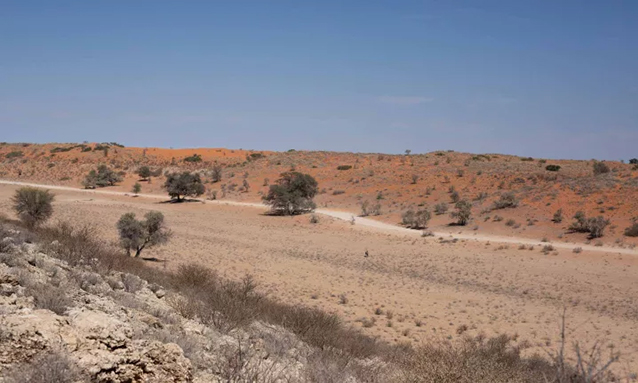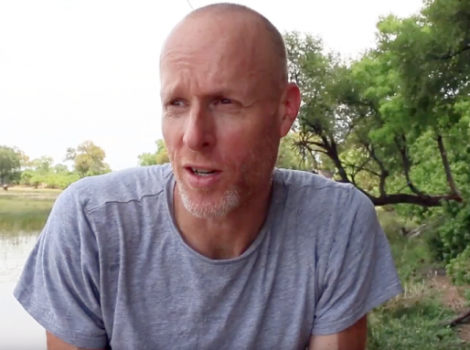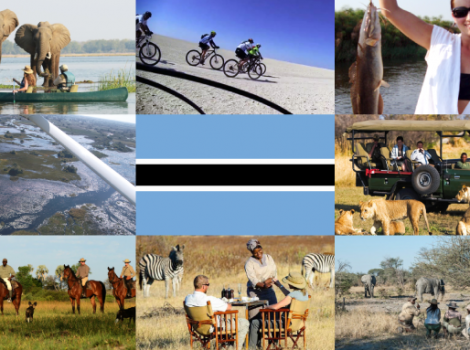
22 September 2023
The Kgalagadi Transfrontier Park is home to pans, dunes, dry riverbeds, and a diverse variety of wildlife.
Roads have been constructed in the dry riverbed as both the Auob and Nossob Rivers rarely, if ever, have any flowing water.
San and Khoi Khoi groups are some of the Kgalagadi Desert’s first known inhabitants. They adapted their lifestyles and cultures to the harsh and dry environment and relied on hunting, gathering, and limited livestock herding.
Dutch and British explorers ventured up to the northern region of South Africa and established limited contact with the indigenous groups. However, they were deterred by the desert conditions that the Khoi Khoi and San had adapted to.
The Kgalagadi Transfrontier Park (KTF) is one of the largest nature conservation areas in the world and is nearly as big as Switzerland, covering an area of 39.000 km² with three quarters of the park situated in Botswana and one quarter in South Africa.
World War 1
When World War 1 broke out, British troops used the Auob and Nossob Rivers as access points to the German South West Africa. They sunk boreholes into the rivers to supply water to their troops.
Scotsman Roger Jackson divided the Kgalagadi region into farmland, which is why many of the waterholes have Scottish-sounding names. The farmers struggled to produce a crop in the arid climate, and many turned to hunting the large herds of antelope to make a living.
Kgalagadi declared a national park
South Africa’s Minister of Lands Piet Grobler discovered how depleted the region had become of wildlife and made it his goal to declare the land between the two rivers the country’s second national park (after the Kruger).
On 31 July 1931, the Kalahari Gemsbok National Park was officially established, and soon after, more land was added to the park.
In 1938, Bechuanaland (or Botswana) established the Gemsbok National Park, a bigger land area on the opposite side of the Nossob.
The two areas were run as a single unit, but authorities only agreed on naming it a transfrontier park in 1999.
On 12 May 2000, The Kgalagadi Transfrontier Park officially opened and is still one of the world’s biggest conservation areas.
The Kgalagadi today
The Kgalagadi is described as one of the country’s ‘most out-of-the-way tourist attractions,’ but the experience is worth the journey.
The South African side of the park boasts three traditional rest camps with camping facilities and accommodation, namely Twee Rivieren, Mata Mata, and Nossob.
There are six Wilderness Camps for overnight visitors and several private camps. The roads are easy to navigate but are sandy and corrugated in some areas, so 4x4s are highly recommended.
Although you won’t find rhinos, hippos, elephants, or crocodiles in the game reserve, twitchers can spend hours enjoying the diverse birdlife. The large herds of antelope are beautiful, and many visitors report close encounters (in their cars) with the big cats.
The Government of Botswana has allocated five fixed lodge sites for development by the private sector. To maintain the KTP’s pure wilderness experience, authorities strictly control the number of vehicles that travel the wilderness trails, the number of nights a camping party can stay at a campsite (usually limited to one night) the number of people at each camp. Hence, booking well in advance is essential. Self-drive campers must travel in a convoy of a minimum of two vehicles, and the rough and sandy roads mean that intrepid explorers use well-equipped 4×4 vehicles only.
On Botswana’s side, rich birding is always part of the experience. Over 170 species of birds are present here, and it is not uncommon to see over 30 bird species within a few kilometres of a campsite.
At Mabuasehube, the terrain is a mixture of typical Kgalagadi tree and shrub savanna with patches of open grass savanna.
This area of KTP comprises a series of huge pans, which are the principal focus of the reserve. Campsites dot the various pans, and many are situated on slight promontories, giving almost unimpeded vision, thus making for good game viewing right from your camp-side chair.
Three of the largest pans lie along the main road; Bosobogolo, Mpayathutlwa and Mabuasehube. Others, such as Leshologago, Khiding and the fossil valley complex called Monamodi, are linked to the larger pans by sand tracks.
Each pan is unique. The Mabuasehube pan floor is bare clay rich in salts, which attracts animals that come to lick the surface, deriving essential minerals. The base of Bosobogolo pan is short, shrubby grassland, which antelope frequent to graze, accompanied, of course, by predators.
Mabuasehube is home to many main predators, including the Kalahari black-maned lion, cheetah, leopard, brown hyena, bat-eared fox, lynx, and silver fox. Like the Cape fox, sharp-eyed visitors can view small mammals such as aardwolf and black-footed cat in the pans in the evening.
Source: https://www.getaway.co.za/wildlife/kgalagadi-transfrontier-park-a-brief-history/



